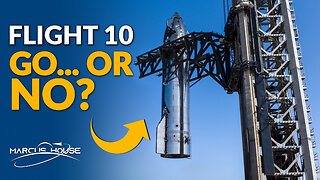Premium Only Content

Pressure, Torricelli's principle and Pascal's principle
Fundamental concepts in physics and engineering related to pressure.
Pressure
Pressure is the force per unit area exerted on a surface.
Types of Pressure
1. *Absolute Pressure*: Pressure measured with respect to vacuum.
2. *Relative Pressure*: Pressure measured with respect to atmospheric pressure.
3. *Hydrostatic Pressure*: Pressure exerted by a fluid in equilibrium.
4. *Atmospheric Pressure*: Pressure exerted by the Earth's atmosphere.
Torricelli experiment
He demonstrated the existence of atmospheric pressure using a mercury tube.
Pascal's Principle
It states that the pressure applied to a fluid at one point is transmitted equally in all directions.
Applications
1. *Hydraulic Engineering*: Design of irrigation and sewage systems.
2. *Mechanical Engineering*: Design of machines and fluid systems.
3. *Medicine*: Study of blood and respiratory pressure.
4. *Aviation*: Study of atmospheric pressure and altitude.
Formulas
1. *Absolute Pressure*: Pabs = Patm + Pref
2. *Relative Pressure*: Pref = Pabs - Patm
3. *Hydrostatic Pressure*: Phidro = ρ × g × h
4. *Pascal's Principle*: P1 / A1 = P2 / A2
Units
1. *Pascal (Pa)*: SI unit of pressure.
2. *Atmospheres (atm)*: Unit of atmospheric pressure.
3. *Bar*: Pressure unit used in meteorology.
Importance
1. *Understanding pressure*: Fundamental to designing systems and machines.
2. *Safety*: Know the pressure to avoid accidents.
3. *Innovation*: Applications in technology and science.
-
 LIVE
LIVE
Lofi Girl
2 years agoSynthwave Radio 🌌 - beats to chill/game to
513 watching -
 LIVE
LIVE
The Official Steve Harvey
12 days ago $5.01 earned24 HOURS OF MOTIVATION w/ STEVE HARVEY
503 watching -
 25:56
25:56
DeVory Darkins
20 hours ago $0.50 earnedTrump drops ULTIMATE BOMB on Democrat Mayors as ICE makes SHOCKING Announcement
32.6K158 -
 3:36:30
3:36:30
TonYGaMinG
5 hours ago🟢 ABI WITH FRIENDS | 🍩JOE DONUTS | 😶 🌫 VLADSGAMINGCARTEL |
16.7K4 -
 21:24
21:24
marcushouse
11 hours ago $0.08 earnedStarship Flight 10: Go or No? 🚀
21.8K12 -
 LIVE
LIVE
MrR4ger
16 hours agoSUNDAY FUNDAY w/ R4GER - VARIETY / DIABLO 4/ FOR HONOR / ETC?
88 watching -
 5:40
5:40
WhaddoYouMeme
3 days ago $0.22 earnedThey’re Calling This the End of Masculinity
26.8K28 -
 15:24
15:24
Tactical Advisor
20 hours agoBest 2011 of 2025 | Bul Armory Ultralight Pro
28.2K2 -
 27:31
27:31
True Crime | Unsolved Cases | Mysterious Stories
2 days ago $0.14 earnedThe Hong Kong Schoolgirl Mystery – 5 Mysterious Unsolved Cases (Part 8)
21K3 -
 7:19
7:19
China Uncensored
1 day agoChina is DONE in the South China Sea
17.1K45